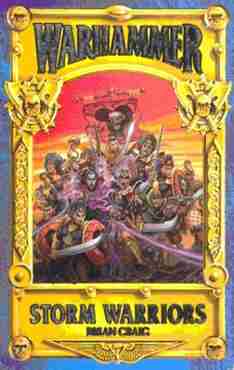| Home |
| Novels |
| Collections |
| Translations |
| Non-Fiction |
| Short Stories |
| Anthologies |

Trystan saw the seething shadows in the clouds take on form and substance - until they had assumed the shapes of ghostly riders, a hundred strong.
All were lean with shrunken eyes lost in shadow, and many bore the scars of battle, picked out in livid white against their grey flesh, as if they shone with starry light... These warriors had long since quit the land of the living.
" Thou art in our world now, " one rider called out, "where those who are not of our number must be our prey. We are the Storm Warriors of Slaanesh, from whom there is no escape."
Cover art by Fangorn
Published by Games Workshop Publishing in March 1991 (as by Brian Craig)
ISBN:1-872372-17-1

Cover art by Fangorn
Published by Boxtree in July 1994 (as by Brian Craig)
ISBN : 0-74-344321-7

